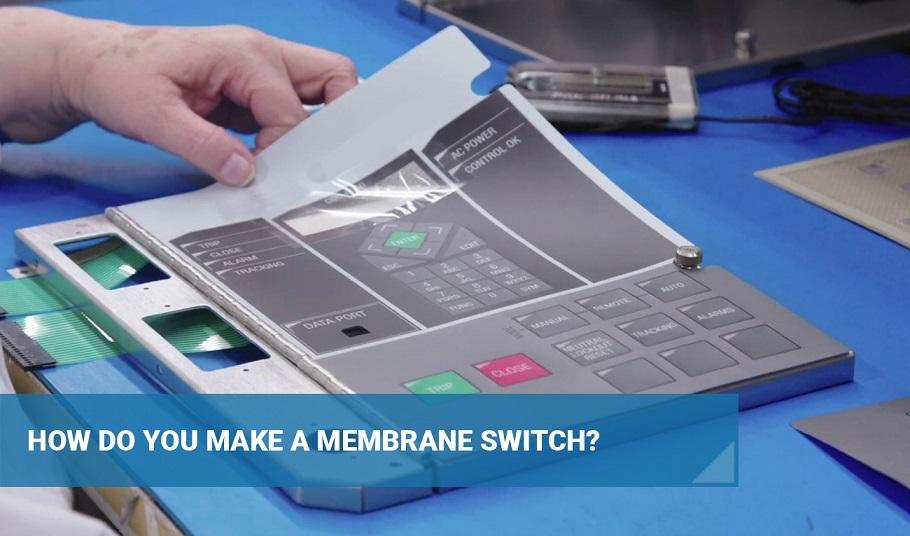Recognizing the Performance of Membrane Layer Switches for User Interface Instruments
The functionality of membrane switches over represents a substantial advancement in customer interface layout, incorporating efficiency with visual flexibility. These buttons operate via a multi-layered framework that converts individual interactions right into electrical signals, permitting both portable formats and resilience against environmental elements. As markets increasingly prioritize individual experience, recognizing the subtleties of membrane layer button innovation comes to be vital. What implications do these innovations hold for future applications, and just how might they redefine individual communications across various tools?
What Are Membrane Layer Buttons?
Membrane layer buttons are innovative user interface gadgets that facilitate customer interaction with electronic devices. These functional elements include multiple layers, consisting of a graphic overlay, spacer, and a printed circuit layer. The design enables a smooth integration into different digital devices, boosting both the aesthetic and useful elements of interface.
Membrane switches are typically employed in a variety of applications, from home appliances to industrial equipment and clinical gadgets. Their building and construction generally features a slim account, making them a suitable selection for portable layouts. The responsive comments provided by these buttons can be crafted to fulfill specific customer preferences, guaranteeing effective communication between the individual and the device.
Longevity is one more substantial advantage of membrane layer buttons, as they are resistant to dirt, wetness, and chemicals, which improves their life-span sought after atmospheres. Furthermore, these buttons can be personalized in terms of form, dimension, and graphic style, enabling branding and user-specific features. Overall, membrane layer changes represent a practical solution for improving customer experience in electronic tools, combining capability with aesthetic appeal in an efficient way.
Just How Membrane Layer Changes Work
Operating on a simple principle, membrane layer changes make use of a layered building and construction to register customer input successfully. Each switch is composed of numerous layers, consisting of a printed circuit layer, a spacer layer, and a leading visuals layer, which are designed to function together flawlessly. When a user presses the leading layer, it compresses the spacer layer, bringing the conductive aspects of the circuit layer right into call with each other.
This contact develops a closed circuit, signaling the device to perform a certain feature. The style enables various configurations, consisting of tactile comments, which can enhance the customer experience by providing a physical sensation upon activation. The materials made use of in membrane layer buttons often include adaptable substratums, such as polyester or polycarbonate, which ensure toughness and resilience versus wear and tear.

Key Benefits of Membrane Layer Switches

An additional considerable benefit is their compactness. Membrane layer switches are thin and lightweight, which makes it possible for producers to save space in their tools without compromising performance. This function is particularly beneficial in applications where weight and quantity are critical considerations.
Furthermore, membrane switches are immune to dust, dampness, and chemicals, boosting their sturdiness. This resilience extends their lifespan and reduces the need for frequent substitutes, causing price financial savings gradually.
Additionally, the tactile comments provided by membrane buttons can be optimized to boost individual interaction. They can include features such as elevated switches or audible clicks, boosting usability and user experience.
Applications Throughout Industries
Interface gadgets making use of membrane buttons are common in a broad range of markets, showcasing their adaptability and capability. you could try here Membrane Switch. In the medical sector, membrane layer buttons are essential to devices such as analysis tools and patient tracking systems, where their toughness and simplicity of cleaning are essential for keeping hygiene standards. In a similar way, in the automotive industry, these switches are used in control panel controls and infotainment systems, giving a sleek and modern user interface for users.
In addition, the customer electronic devices field gain from membrane layer buttons in home appliances and portable gadgets, where small style and straightforward user interfaces improve individual experience. Industrial applications likewise take advantage of membrane changes for control panels in machinery and automation systems, emphasizing their effectiveness and resistance to rough environments.
In the aerospace and defense industries, membrane buttons are made use of in cabin controls and devices, where reliability and performance under severe conditions are critical. In addition, the video gaming industry increasingly includes membrane layer switches in controllers and gallery machines, adding to an appealing user experience. Overall, the flexibility of membrane layer changes enables their prevalent usage across numerous fields, emphasizing their importance in modern customer interface layout.
Future Fads in Membrane Switch Over Innovation

Furthermore, making use of sophisticated products, such as polycarbonate and polyester films, is expected to increase, giving enhanced toughness and resistance to ecological stressors. These materials contribute to the overall durability of membrane layer switches, making them ideal for harsher commercial applications.
Moreover, the unification of clever technology, consisting of IoT connection, will certainly allow membrane layer buttons to interact with various other devices and systems, promoting an extra interactive customer experience. This trend aligns try this website with the growing demand for wise gadgets across different markets, from healthcare to customer electronic devices.
Finally, modification alternatives are prepared for to increase, permitting suppliers to have a peek here develop bespoke services tailored to particular individual requirements and preferences. These developments will place membrane layer buttons as crucial components in the development of interface technology.
Conclusion
Finally, membrane changes stand for a critical advancement in interface modern technology, using a trusted and flexible service for diverse electronic applications. Their layered construction promotes small design, while attributes such as responsive feedback boost user communication. The toughness against ecological aspects even more strengthens their energy across numerous sectors. As improvements in material scientific research and touch sensing modern technologies continue, the capability and applicability of membrane buttons are anticipated to expand, enhancing their importance in modern-day electronic tools.